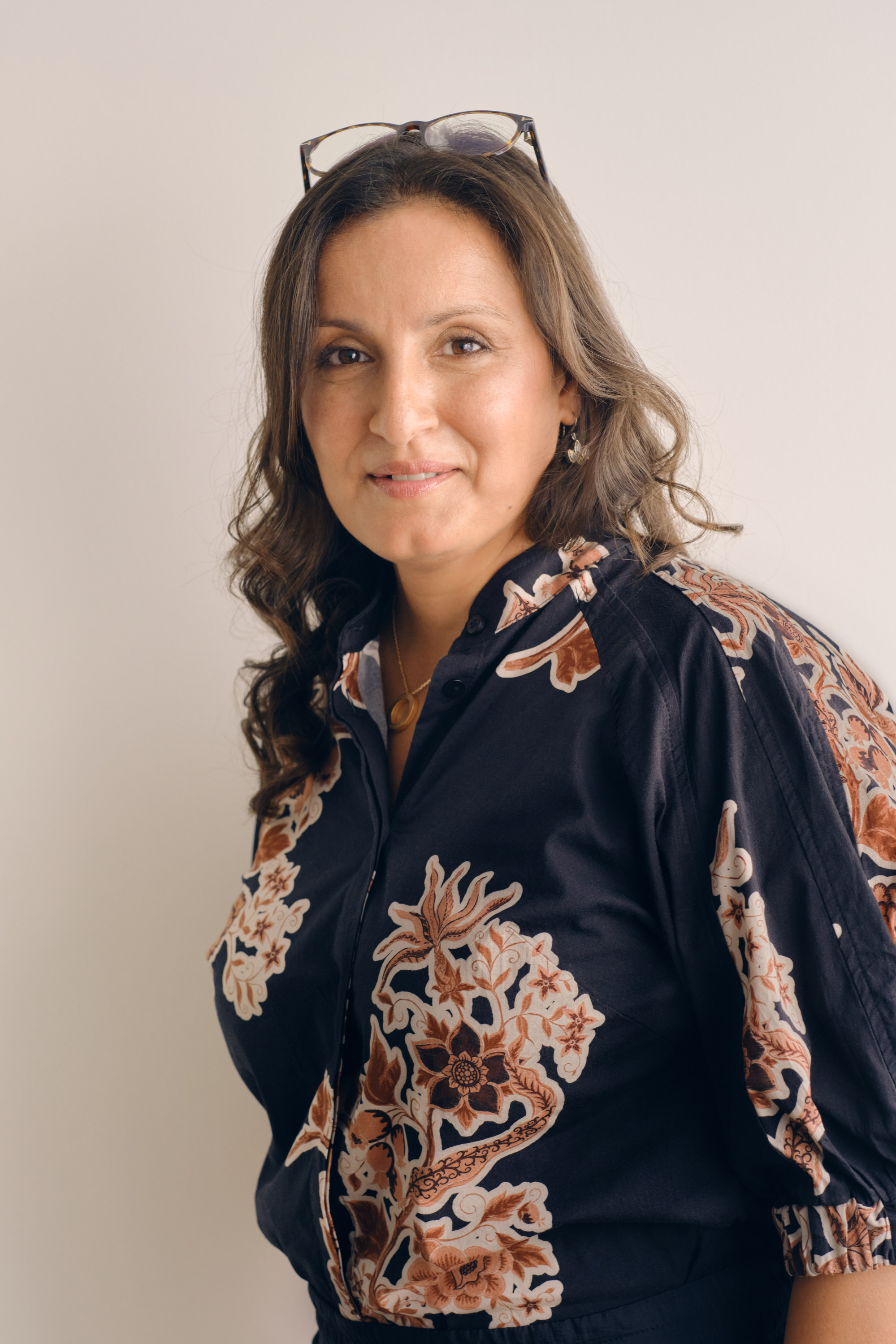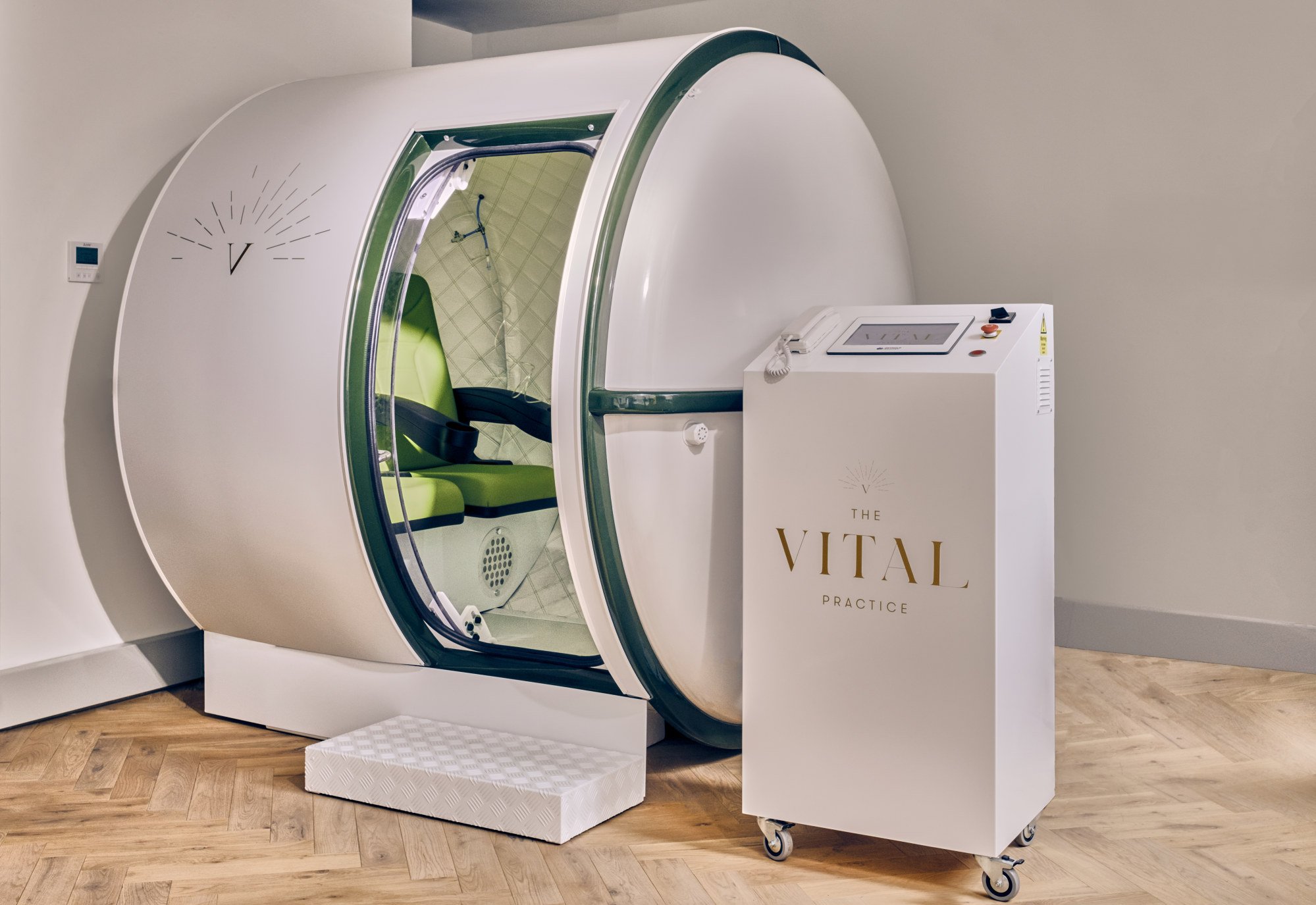
How hyperbaric oxygen treatment (HBOT) helped osteopath’s mother fight cancer, and how it can aid long Covid and dementia patients – and slow ageing
- ‘We wanted to create an environment in which her body was stronger, going into the operation,’ osteopath says of her cancer-stricken mother’s HBOT treatment
- Studies point to the benefits of HBOT in treating autism, strokes, chronic pain, Alzheimer’s, dementia, brain damage, cancer and long Covid
When osteopath Amberin Fur’s mother was awaiting surgery for colon cancer in 2018, Fur set out to do everything in her power to improve the prospects of a swift recovery.
A multidisciplinary healer who believes in a holistic approach to well-being, Fur turned to hyperbaric oxygen therapy (HBOT).
HBOT is the supply of pure oxygen under pressure in a chamber. Breathing close to 100 per cent oxygen increases oxygen supply to the blood and tissues; since wounds need oxygen to regenerate tissue, studies show that time spent in the chamber can speed wound healing.
Fur’s mother had 10 60-minute sessions of HBOT before the surgery, and about 10 more after it.

“We wanted to create an environment in which her body was stronger, going into the operation,” Fur says.
The benefits from HBOT were immediately obvious in her mother’s case, in which the HBOT increased cellular energy production – the reaction of glucose and oxygen to create adenosine triphosphate that provides energy – to alleviate pain and fatigue.
We try the anti-ageing therapies Lady Gaga, Justin Bieber, others swear by
“With the cancer she was so listless. I would come to pick her up for an HBOT session and she would be fighting me, ‘Oh no, I can’t be bothered’. Afterwards she would come bouncing out of the chamber asking, ‘Shall we go shopping?’”
It was all the anecdotal evidence Fur needed. “It added fuel to my fire of understanding” of HBOT, she says.
Fur was named London’s best osteopath by Gwyneth Paltrow’s Goop.
She qualified in 1997, after studying at the British School of Osteopathy. Fur underwent further training and courses, including in medical acupuncture and medical homeopathy, and gained a postgraduate diploma in women’s health.

Her 25 years of experience spans working with elite sportsmen and women – she travelled with the British gymnastics team for 12 years and worked in the core medical services tent at London’s 2012 Olympic Games. Fur also supported Cirque du Soleil and The 7 Fingers circus acts for many years at their London performances.
While running a clinic in London, she set up a children’s clinic in Hyderabad, India, treating children aged six to 17 who had learning difficulties.
Fur had set out to become a medical doctor, but became disillusioned with the profession’s lack of flexibility in adopting complementary therapies. When she discovered osteopathy, she knew she had found her calling.

“We’re not simple musculoskeletal creatures, that’s why the different modalities have always intrigued me,” she says. “Osteopathy is not just, oh, you’ve hurt your elbow, it’s how your body processes the external with the internal, your history, any injuries you’ve had; it’s in context with the rest of the body and its history.”
Last year she established The Vital Practice in London’s Mayfair district. It’s a multidisciplinary clinic bringing together a variety of approaches to support her patients’ health.
Fur has always used HBOT in her osteopathy work, influenced by meeting and working with physiotherapist and hyperbaric expert Dr Robert Pender, known for introducing HBOT to the UK.
No cure for Alzheimer’s, but we can narrow the odds of developing it
“When you look at what your cells need to heal, oxygen is key. We put the body into the most optimum position by hyper-oxygenating it, so its inherent healing mechanisms can be triggered to improve performance and function optimally,” says Fur.
“Normally you get 21 per cent oxygen in the atmosphere; in the pressurised chamber you get close to 100 per cent oxygen. The pressure in the chamber drives [more] oxygen into the plasma, which can penetrate areas the red blood cells cannot.”
The Vital Practice has a two-seater hyperbaric chamber, which has been a core offering to patients along with osteopathy, functional medicine, photobiomodulation therapy (PBM) and light therapy (LLLT), both of which use specific wavelengths of red and near-infrared light to help the body heal.
Now about half of her patients daily show an interest in HBOT for themselves or family – some have even been inspired to install hyperbaric chambers in their own homes.

“It showed a clear indication of better response times in single and double tasks within the HBOT chamber,” she says.
Based on the study, she says: “Hyperoxygenation impacts not only longevity, but performance and brain optimisation, thus quality of life.”

“The essence is that cells require oxygen for energy, and a trigger to induce stem cell proliferation,” she says. HBOT provides that oxygen to the system. The oxygen is delivered to the blood, where it can diffused through tissue and hyper-oxygenate the system.
Fur stresses that HBOT is not a cure. “There is no silver bullet for anything; change takes perseverance.”
Yet she sees the proof that HBOT works in her mother’s face. Five years on, she is fighting fit.
“My mother is a force, and she is recovered and doing well, aged 78.”

